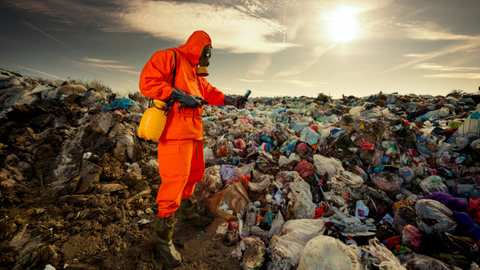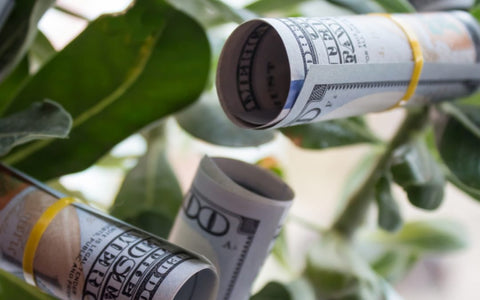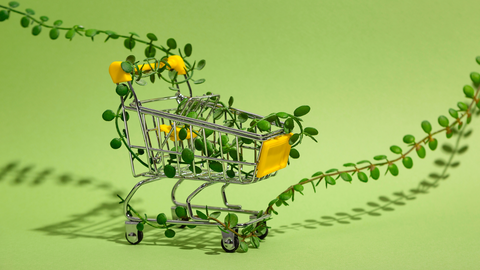We became interested in the ‘food system’ in 2015, as a result of a life-long passion for food and a growing interest in the environment and sustainability. What started as a casual curiosity soon became an obsession, and by 2016 our founders Nate & Rob had agreed to start a business together. Urban Leaf was born.
What amazed us then, and continues to today, is 1) how oblivious most people are to the damage that their food choices are causing, and 2) how easy it is to reduce your personal environmental footprint by making a few simple changes to your diet. What really sealed the deal for us, was the realization that there is an incredibly high correlation between foods that are good for the planet, and foods that are good for our own personal health.
This blog outlines some of the most startling facts and figures we’ve come across to date through our learnings about the food industry and how it operates. If you’ve looked into this topic yourself, we ‘d love to hear your thoughts in the comments below.
Food vs Healthcare spending
Between the 1950s and 2019, the percentage of disposable income that Americans spend on food fell from 21% to 9.5%, according to the USDA. This occurred due to the rise of double-income families (moms were less likely to be stay-at-home housewives) and was enabled by the industrialization of food. But cheap food doesn’t mean good food.
Over the same time period, the percentage of American disposable income allocated to Healthcare & Pharmaceuticals went from 3% to 15%. So in the 1950’s it was 21% + 3% = 24% and today its 9% + 15% = 24%. The total hasn’t changed; all we’ve done is decided to pay the medical industry for our food choices rather than the food industry.

No other country in the world spends a) less on food and b) more on healthcare than the United States. What’s really bizarre, however, is that despite spending more on healthcare than any other country in the world, Americans actually live shorter lives. We are literally eating ourselves to death. Our food system is not keeping us healthy and it’s not helping us live a long time. It’s killing us.

Input vs Output efficiency within the food system
There are two main ways in which our food system is frighteningly inefficient:
- Animal agriculture. Check out the chart below to compare the land, water, and GHG that is produced to produce animal-based protein compared to plant-based proteins.
- Processing, packaging, and transport
Waste due to food production
Roughly 40% of the food produced in the United States is wasted and never eaten. Can you imagine how profitable a company like Apple would be if it had to produce 100 iPhones just so they could sell 60, and the rest got thrown away? Of course, you can’t. That’s because it’s ridiculous. Well, that’s exactly what our food industry does every single day.
Not only does most of this food end up in landfill, where anaerobic decomposition causes it to create methane and contribute to global warming, but the process of throwing all this food away also means we’re throwing away ridiculous quantities of inputs like land, water, and fertilizers that went into producing that food. At one point the UN actually estimated that if ‘food waste’ were a country, its GHG emissions would make it the third-largest country in the world.
Can you think of any other industry in the world that has a 40% wastage factor? Go on, we’ll wait.
Consider the distance your food travels
The average American meal travels 1,500 miles from farm to table. Distance = time and the problem with that is that fresh fruits and vegetables start decomposing the instant that they are harvested. As they decompose on the back of a truck, they lose their nutritional value. If you’re eating weeks-old leafy greens you might as well be eating crunchy water.
In order to enjoy the benefits of eating many fruits and vegetables, they need to be consumed soon after harvest, and that’s just not possible when large distances are involved. Not only that, we’re burning huge amounts of fossil fuels to move all this food around the country. It’s ridiculous.
Resource consumption within the food system
Globally, the food and agriculture industry is the #1 source of land clearing, freshwater usage, deforestation, and species extinction. It’s also a leading source of GHG emissions and hence climate change. Every day 200,000 acres of rainforest are burned or cleared to make way for farms. And what do we do on those farms? We sprinkle them with synthetic fertilizers so that they can grow GMO wheat, corn, or soy, we deplete natural resources of water to hydrate our monoculture farms, we then feed those monoculture crops to animals, then we transport that animal protein all across the world. At literally every step of that process we are incurring obscene amounts of wastage.
Our industrialized food system was designed and largely built at a time when Earth’s population was a fraction of what it was today. Our forefathers that did it believed in the misconception that natural resources were plentiful. The few that did pause to think about this, are realizing it might be flawed, anticipated that the day when our resources would run out was so far away that they didn’t need to worry about, and that some smart person would eventually come along and design a better food system. Well, guess what? That person is YOU and that time is NOW.
In around 1970 planet earth was ‘balanced’. The natural resources it had to offer matched the population that inhabited it. But ever since then, we have been ‘borrowing’ resources from the bank of Earth. We have been consuming more than what the planet can replenish. Eventually, the resources will run out. This is not a matter of it, it’s a matter of when.











There are no comments for this article. Be the first one to leave a message!